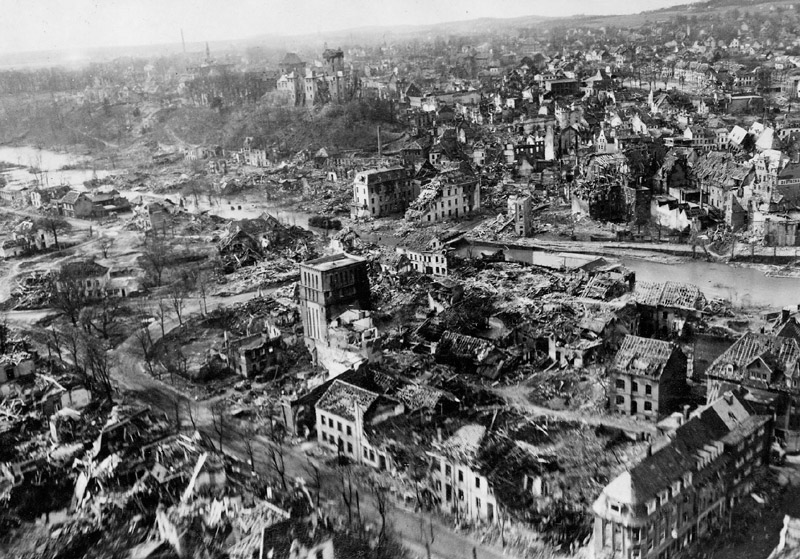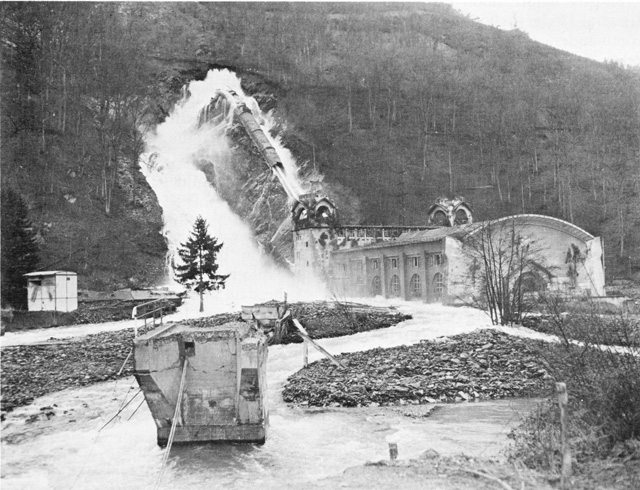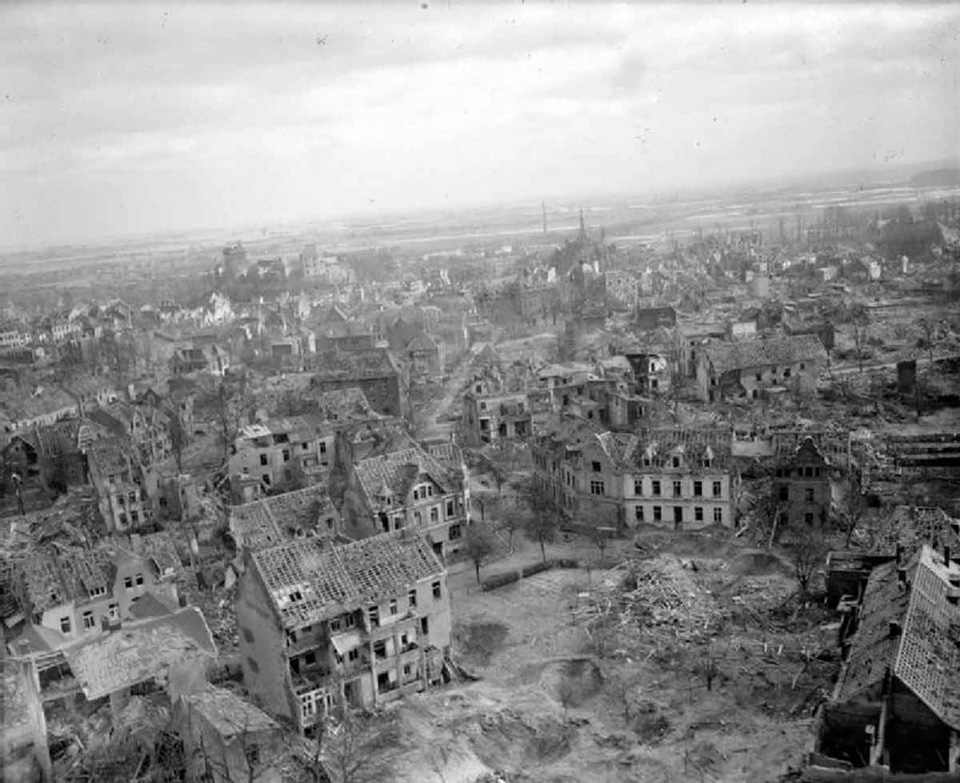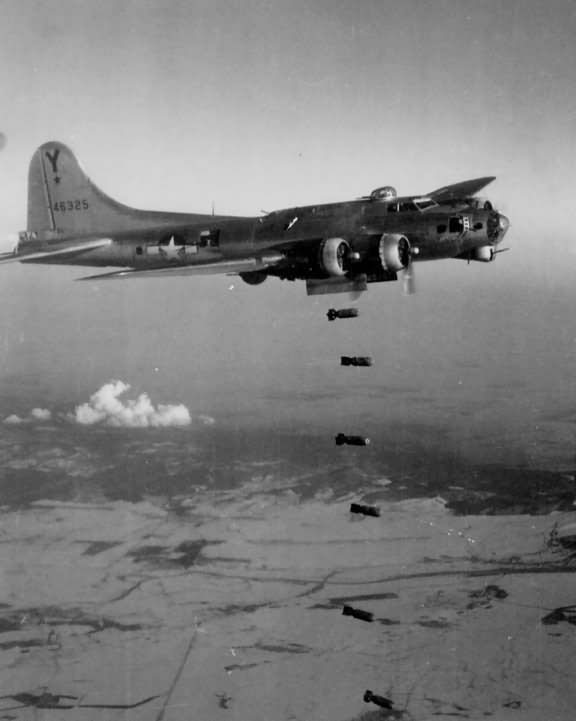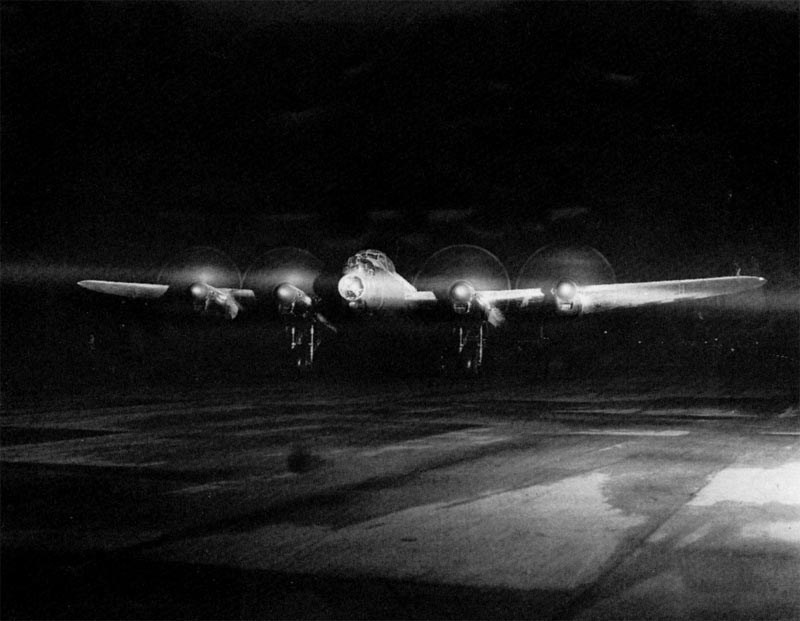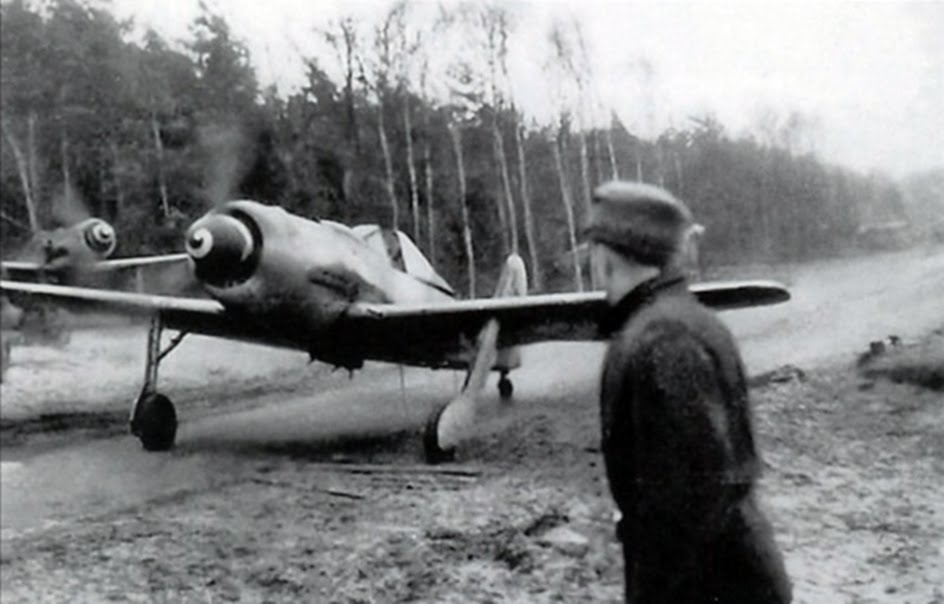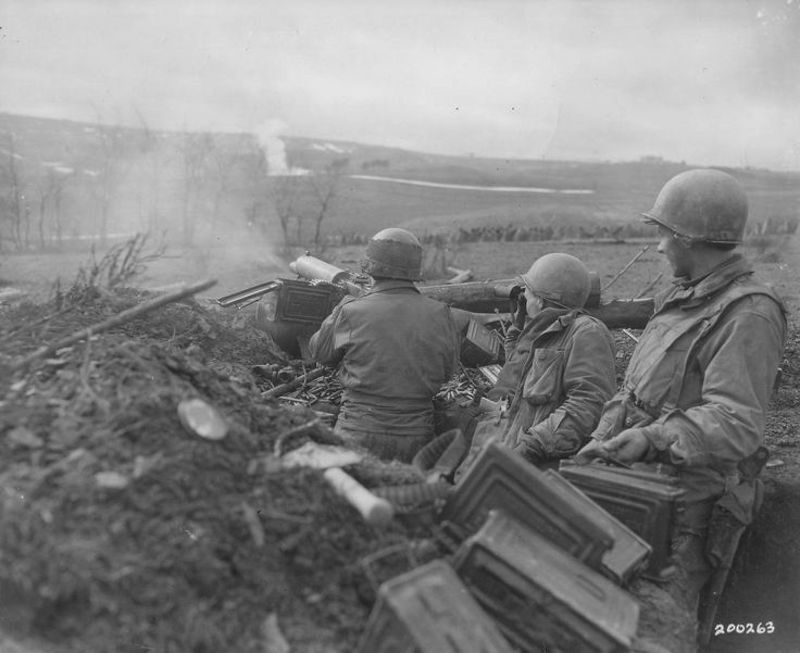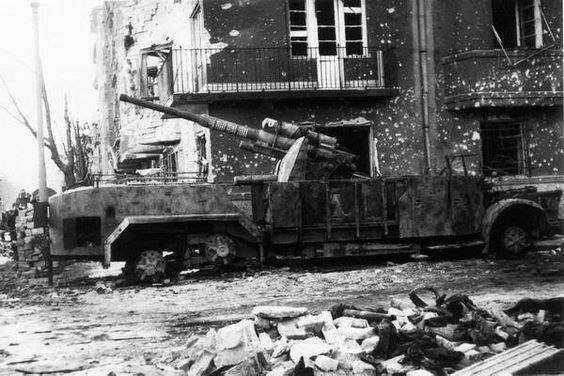Air Operations, Bonin and Volcano Islands
- 8 VII Bomber Command B-24s attack Iwo Jima while 6 B-24s attack Chichi Jima.
- During the night, 9 VII Bomber Command B-24s conduct snooper raids against Iwo Jima.
Air Operations, CBI
BURMA- 11 10th Air Force B-25s attack troops and tanks at Man Namman.
- 50 10th Air Force P-47s support Allied ground forces preparing to cross the Shweli River near Myitson.
- More than 40 fighter-bombers attack troops and supplies at 9 locations.
- 11 14th Air Force P-51s attack a bridge near Hengshan.
- P-40s attack road, river, and rail traffic across southern China and into French Indochina.
- 2 fighter-bombers attack warehouses in Kweihsien.
- Japanese Army ground forces capture the 14th Air Force’s airfield at Kanchou.
- 33 of 67 58th Very Heavy Bomb Wing B-29s dispatched attack Saigon.
- 19 B-29s attack targets of opportunity in and around Phnom Penh.
- 2 B-29s attack a marshalling yard at Martaban, Burma as a target of last resort.
- 1 B-29 is lost.
- 58 of 64 58th Very Heavy Bomb Wing B-29s dispatched attack a bridge in Bangkok.
- 1 B-29 attacks a marshalling yard in Martaban, Burma as a target of last resort.
- 7th Heavy Bomb Group B-24s destroy a bridge near Ye with Azon bombs.
Air Operations, East Indies
XIII Bomber Command B-24s attack oil facilities at Tutong, and the Miri and Tawau airfields on Borneo.
[Air Operations, Europe
RAF BOMBER COMMANDDaylight Ops:
- 100 Lancasters of No. 3 Group are sent to attack the oil plant at Wanne-Eickel. Only 75 aircraft are able to bomb in wintry conditions which scatters the force. The results of the raid are not known.
- 1 Lancaster is lost.
- 464 aircraft including 292 Halifaxes, 156 Lancasters and 16 Mosquitos of Nos. 4, 6 and 8 Groups are sent to attack Goch. This raid is preparing the way for the attack of the British XXX Corps across the German frontier near the Reichswald. The Germans have included the towns of Goch and Kleve in their strong defenses here. The Master Bomber orders the Main Force to come below the cloud, the estimated base of which is only 5,000ft, and the attack opens very accurately. The raid is stopped after 155 aircraft have bombed, because smoke is causing control of the raid to become impossible. Considerable damage is caused in Goch but most of the inhabitants had probably left the town.
- 2 Halifaxes are lost.
- 295 Lancasters and 10 Mosquitos of Nos. 1 and 8 Groups are sent to hit Kieve. 285 aircraft drop their bombs, which is battered even more than Goch. After the war, Kleve claimed to be the most completely destroyed town in Germany of its size. The British attack, led by the 15th (Scottish) Division, makes a successful start a few hours later, but quickly grinds to a halt because of a thaw, which causes flooding on the few roads available for the advance, and also because of the ruins which block the way through Kleve. Lieutenant-General B. G. Horrocks, the Corps Commander in charge of the attack, later claimed that he had requested that Kleve should only be subjected to an incendiary raid, but Bomber Command dropped 1,384 tons of high explosive on the town and no incendiaries.
- 1 Lancaster is lost.
- 177 Lancasters and 11 Mosquitos of No. 5 Group attack the Dortmund-Ems Canal section near Ladbergen with delayed-action bombs. Later photographs show that the banks have not been damaged. The bombs have fallen into nearby fields.
- 3 Lancasters are lost.
- 38 Mosquitos are sent to Magdeburg, 16 to Mainz and 41 in small numbers to 5 other targets, 30 Lancasters and 15 Halifaxes lay mines in Kiel Bay, and there are 45 Mosquito patrols and 63 RCM sorties.
- 4 Mosquitos are lost, 3 from No. 100 Group and 1 from the Mainz raid.
GERMANY:
- 294 1st Air Division B-17s and all escorting fighters bound for Essen are recalled because of bad weather, but 1 B-17 attack the target.
- Of all 8th Air Force combat units, only the 364th Fighter Group gets into action during a fighter sweep.
GERMANY:
- Although the 9th Air Force is grounded by bad weather, 12 9th Air Division B-26s attack a rail siding at Lippe.
ITALY:
- 12th Air Force B-25s an XXII TAC P-47s attack bridges and rail lines.
- XXII TAC P-47s attack several dumps and sugar refineries.
- During the night, XXII TAC A-20s attack at least 58 targets in Brenner Pass and the Po River valley.
AUSTRIA:
- 15th Air Force heavy bombers attack at least six oil refineries in the Vienna area, and the Zwolfaxing Airdrome.
- 15th Air Force heavy bombers attack an oil-storage facility at Pula and the town of Bratislava.
Air Operations, Formosa
- 90th Heavy Bomb Group B-24s and V Fighter Command P-38s unable to attack Takao because of bad weather over the target divert to attack the airfield at Heito.
- 38th Medium Bomb Group B-25s and V Fighter Command P-38s mount anti-shipping and other sweeps over Formosa and nearby waters.
- A 3rd Air Commando Group P-51 downs a Ki-46 'Dinah' reconnaissance plane near Formosa.
- During the night, 63rd Heavy Bomb Squadron SB-24s attack several airfields.
Air Operations, Philippines
- FEAF B-24s attack Bago and Mandaue.
- 20 FEAF B-24s based at Angaur attack the Silay and Talisa airfields on Negros.
- 1 B-24 attacks the Opon airfield.
- A-20s and V Fighter Command fighter-bombers support US 6th Army ground forces with attacks on the hills west of Nichols Field, Luzon.
- An 18th Fighter Group P-38 downs a J1N 'Irving' fighter off the Bataan Peninsula at 1310 hours.
Belgium
The Belgian government resigns.
[China
In southeast China the Japanese occupy Kanchow, a base of the US 14th Air Force.
[Eastern Front
In Budapest the Russians capture the south railway station. On the Vistula Army Group front, the 1st Ukraine Front throws more troops across the Oder in the Kustrin area near Fürstenberg and south of Frankfurt. Further north in Pomerania, the 1st Belorussian Front attacks Arnswalde and Deutsch-Krone (now called Choszczno and Walcz). New Russian divisions go into action against the defenders of Poznan. Isolated detachments are still holding out against the Russians at Elbing. In this region there is some slight improvement in the position of the Army Group North in the peninsula north of Königsberg.
In Yugoslavia the Germans are preparing to leave Višegrad and Mostar, defended until now by Löhr's Army Group E against Tito's partisans.
The Wehrmacht is suffering from an increasing shortage of officers as a result of their high casualty figures. Headquarters orders the suspension of all leave.
POLANDThe 1st Guards Tank, 2nd Guards Tank, 3rd Shock, 47th and 61st Armies of the 1st Belorussian Front (359,000 troops) and the whole 2nd Belorussian Front (560,000 troops) are now battering Army Group Vistula and lancing through its lines.[MORE]
[Pacific
- The Japanese submarine RO-55 is sunk by the US destroyer escort Thomason (DE-203) in the Philippine Islands area.
- The US submarine Bergall (SS-320) attacks a Japanese convoy of the east coast of French Indochina and sinks Coast Defense Vessel No.42 and damages the merchant tanker Toho Maru near Cam Ranh Bay.
- The US submarine Guavina (SS-362) attacks a Japanese convoy about 250 miles south of Saigon, French Indochina, and sinks the merchant tanker Taigyo Maru (6892t).
- The US submarine Parche (SS-384) sinks the Japanese army cargo ship Okinoyama Maru (984t) north of Amami Island in the East China Sea.
- The British submarine Subtle sinks the small Japanese cargo ship Nanei Maru east of the Nicobar Islands.
- The Japanese coast defense vessel No. 53 is sunk by the US submarine Bergall (SS-320) in the South China Sea.
Philippines
On Luzon under pressure from MacArthur, the commander of the US 6th Army, Gen Krueger, orders a speeding-up in the operations to take Manila. The 1st Cavalry Division begins mopping up the eastern part of the city up to the Pasig River, which is crossed by units of the 37th Division in inflatable boats. In the I Corps sector the battle for Muñoz ends in a victory for the Americans; the units of the Japanese 6th Division engaged in the fighting are virtually wiped out when they attempt to escape. But the Japanese at Lupao still hold out vigorously.
In the XI Corps area, the 149th Infantry Regiment of the 38th Infantry Division crosses by an unguarded trail into the rear of Japanese posisiont at Zigzag Pass.
[Western Front
The 78th Div, V Corps, US 1st Army, continues the offensive against the Schwammenauel Dam, taking Kommerscheidt and entering Schmidt and Harscheid. The Germans blow up the floodgates of the dam hoping to slow up the offensive in this area.
In the US 3rd Army sector, the VIII Corps' offensive against the Siegfried Line meets with dogged resistance by the units of the German 7th Army, but the advance continues all along the front. The 6th Arm Div and 17th Airborne Div cross the Our onto the soil of the Fatherland, while the units of the XII Corps put in their offensive across the Our and Sauer Rivers between Vianden and Echternach. Finally, the XX Corps takes Sinz and attacks a German pocket between Campholz and Tettingen by the 94th Div and with the 26th Div launches a series of thrusts in the sector of the Saarlautern-Roden bridgehead. In the French 1st Army sector the XXI Corps continues its advance along the Rhine north and south of Balgau and the 1st Arm Div, French I Corps, crosses the Ill River on a pontoon bridge at Ensisheim.
[Images from February 7, 1945
|
|
|
|
|
|
|
|
Grumman TBM-3 Avenger |
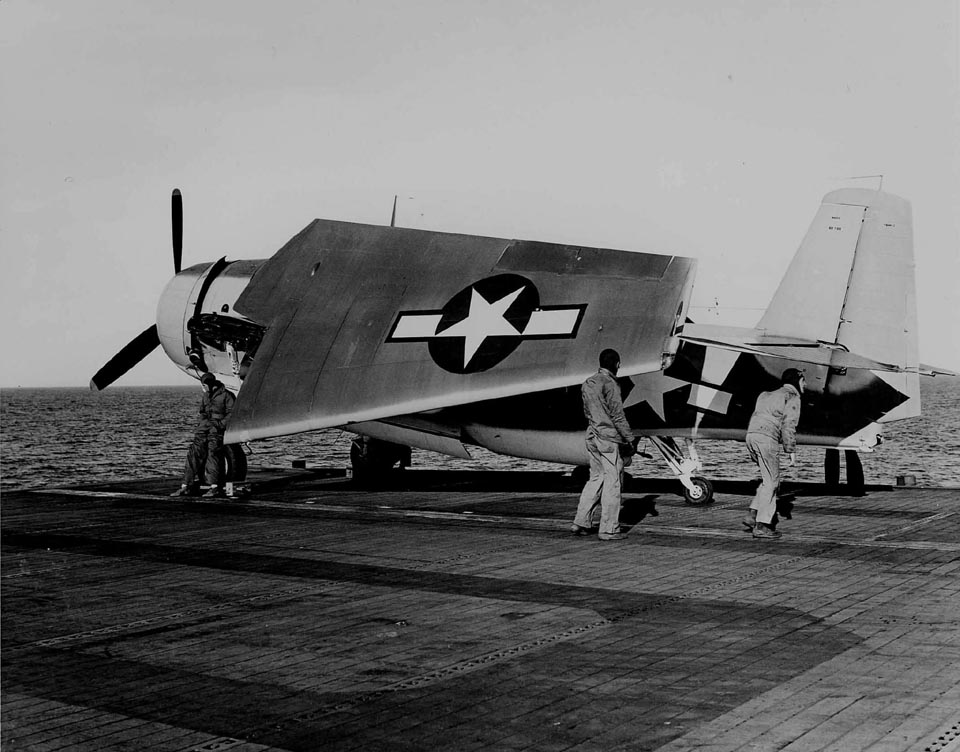 |
